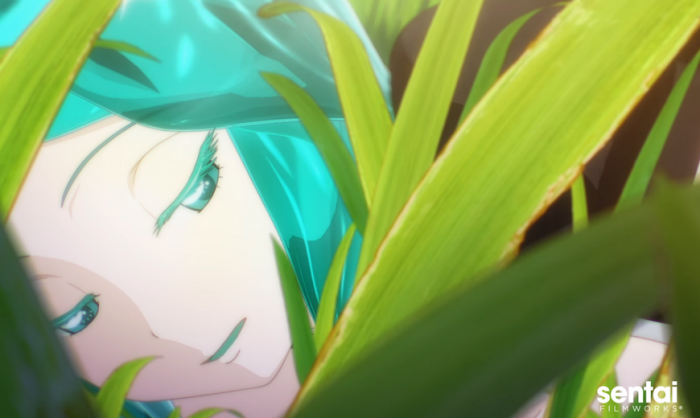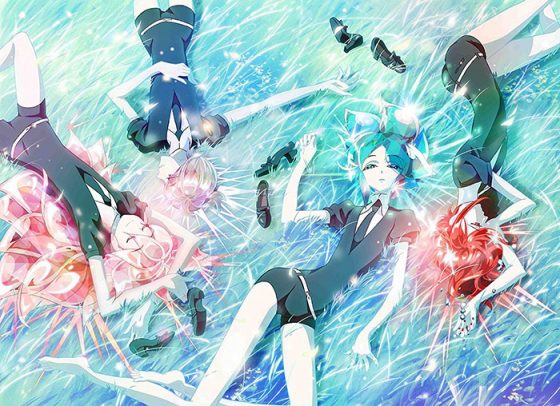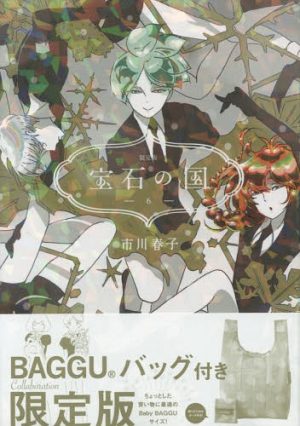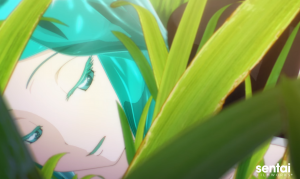
We’re sure you remember the 2017 anime adaptation of Land of the Lustrous, with its groundbreakingly gorgeous CG animation and unique gem-like characters, but have you ever read the manga? Haruko Ichikawa’s seinen saga has been in continuous publication in Monthly Afternoon magazine since 2012, and now it’s reached over 80 chapters (the anime only covered through chapter 31). It explores complex themes like identity and faith, delves deeply into Buddhist symbolism, and features some incredible artwork that brings this unique fantasy world to life in a completely different way than the anime does. Here’s why you need to read Land of the Lustrous!
The Plot Gets Wild
You’d be forgiven for thinking that the first half or so of the anime took its sweet time moving the plot forward. Phosphophyllite’s life isn’t particularly exciting at the beginning since they start off as a “useless slag” who aimlessly wanders around the school and bothers other people with their comical laziness. But once they strike out into the world and start losing their limbs (as well as their memories), the plot thickens. After losing Antarcticite during the winter, Phos focuses on a new goal: find out everything they can about the Lunarians so that they can rescue the gems taken by these mysterious moon people.
The anime leaves off there, but the manga continues by showing Phos’ journey to the moon – they sneak aboard a Lunarian vessel with several other gems they convinced to come along, and they learn shocking truths about who the Lunarians really are and why they attack the gems. Without wishing to spoil, the plot escalates from there into a morally gray struggle between ideologies where Phos is caught in the middle and tries in vain to solve the impossible conflict pitting the two groups against each other. Those idle days they used to know are long gone now...
The Buddhist Symbolism is Fascinating
Buddhism isn’t something we Westerners tend to know much about, so it’s fascinating to read a story that uses the religion as a basis for its theming and symbolism. Phosphophyllite’s journey follows the traditional narrative of the Buddha: they leave their sheltered home to witness the horrific suffering in the world (such as Cinnabar’s exile and the gems losing their partners to Lunarian attacks), embark on a quest to alleviate that suffering, and will presumably come to some kind of enlightenment at the end. The Lunarians function much like the residents of the “Pure Land” in Japanese Buddhism, while the gems and the Admirabilis slug people behave like common folk who fight back against suffering in whatever way they can.
In addition, Phos’ replacement limbs correspond with the seven treasures of Buddhism (gifts representing various tenets of faith that Silk Road travelers would leave at temples). During the anime, Phos gains gold and silver/platinum alloy arms as well as agate and coral legs. Lapis lazuli and pearl come later in the manga, and carnelian/ruby is surely on its way soon. With each new body part, Phos loses more of their original memories and takes on the characteristics of whatever new material they’ve acquired. It’s sad, but perhaps Phos will actually become a more complete person at the end of all this.
Ichikawa’s Art Has Its Own Unique Charms
While the anime’s vibrant animation is amazing to behold, Ichikawa’s line art and color pages are still beautiful in their own way. The uncluttered settings feel quiet and contemplative, the characters are drawn with flowing lines that convey their graceful movements, the character design (especially for the Lunarians and Admirabilis) are easily readable and memorable, and Ichikawa’s color work is just as invigorating as the anime’s translucent CG textures. Sometimes it can be difficult to tell one gem from another when they’re in black and white and all wearing the same outfit, but their personalities still shine through.
Final Thoughts

Land of the Lustrous is an unusual series, but the manga is well worth your time if you enjoy stories that tackle mature themes and take inspiration from uncommon sources like Buddhism. Season 2 of the anime hasn’t been announced yet, so even if you’re apprehensive about experiencing this tale without top-notch CG animation, we urge you to give it a shot anyway. You won’t regret it!
What did you think of our overview? Have you ever read the Land of the Lustrous manga? Would you be interested in a second season of the anime? Let us know in the comments, and thanks so much for reading!
Recommended Post
Top 10 Magical Houseki no Kuni Characters
Recommended Post
Houseki no Kuni Review - No Way! I Want Something Cooler.
Recommended Post



